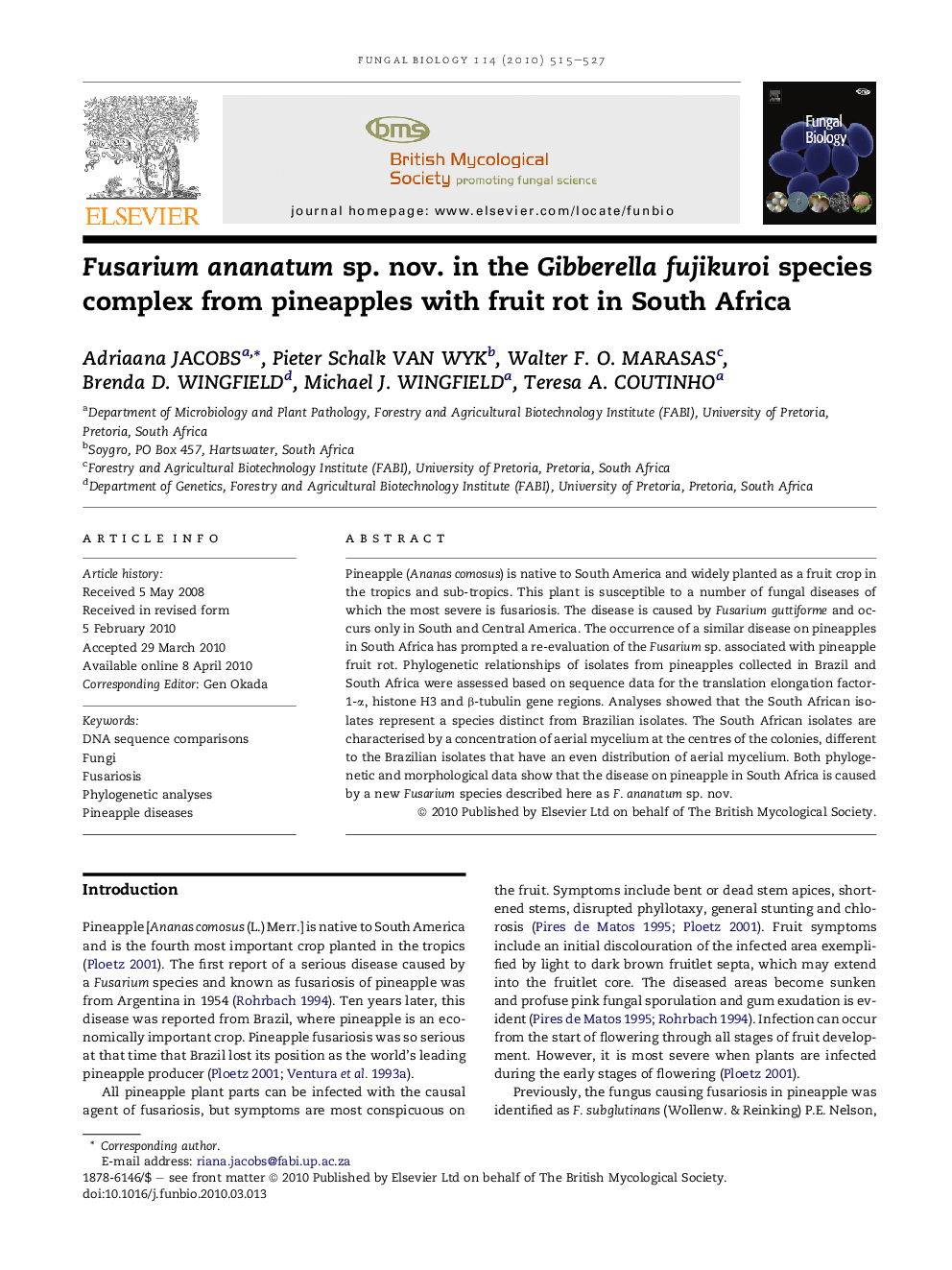| Article ID | Journal | Published Year | Pages | File Type |
|---|---|---|---|---|
| 4357233 | Fungal Biology | 2010 | 13 Pages |
Abstract
Pineapple (Ananas comosus) is native to South America and widely planted as a fruit crop in the tropics and sub-tropics. This plant is susceptible to a number of fungal diseases of which the most severe is fusariosis. The disease is caused by Fusarium guttiforme and occurs only in South and Central America. The occurrence of a similar disease on pineapples in South Africa has prompted a re-evaluation of the Fusarium sp. associated with pineapple fruit rot. Phylogenetic relationships of isolates from pineapples collected in Brazil and South Africa were assessed based on sequence data for the translation elongation factor-1-α, histone H3 and β-tubulin gene regions. Analyses showed that the South African isolates represent a species distinct from Brazilian isolates. The South African isolates are characterised by a concentration of aerial mycelium at the centres of the colonies, different to the Brazilian isolates that have an even distribution of aerial mycelium. Both phylogenetic and morphological data show that the disease on pineapple in South Africa is caused by a new Fusarium species described here as F. ananatum sp. nov.
Related Topics
Life Sciences
Agricultural and Biological Sciences
Agricultural and Biological Sciences (General)
Authors
Adriaana Jacobs, Pieter Schalk Van Wyk, Walter F.O. Marasas, Brenda D. Wingfield, Michael J. Wingfield, Teresa A. Coutinho,
